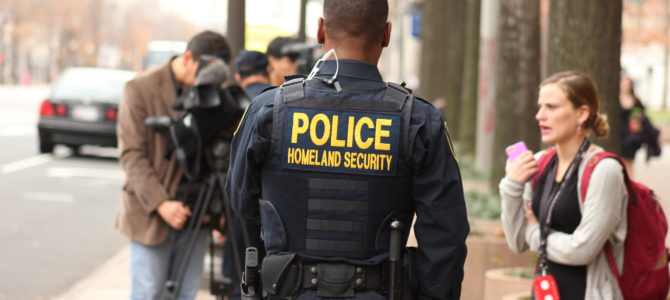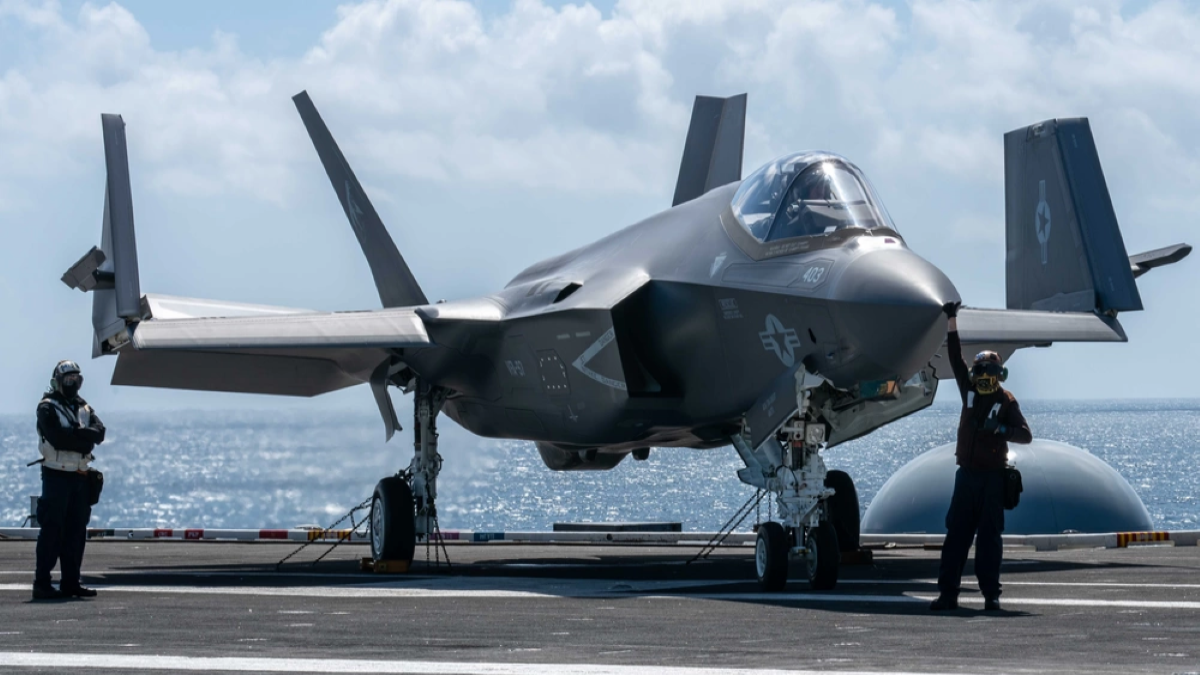
As I’ve scrolled through my social media feeds these past few weeks, all I’ve seen are various iterations of people lamenting that they and their children are subjected to active shooter drills, that the National Rifle Association is evil, that it is unacceptable for their kids (and they themselves) not to feel safe 100 percent of the time anywhere they go, that all or some guns should be banned, etc. I’ve also seen ridiculous demonstrations of general ignorance about existing gun laws, ignorance about guns in general (someone actually thought an AR-15 would obliterate a deer and thus defeat the purpose of hunting for meat), ignorance about gun deaths and gun violence statistics, and, well, I’m sure this audience can add a few more missives to the list of typical knee-jerk reactions and sometimes outright vitriol they’ve observed.
I’ve refrained from commenting and have generally just shared this Washington Post article, in which the author, to her credit, admitted she started out on a three-month research venture to prove every gun control measure would be helpful, only to learn her premise was, in her words, wrong.
It is unfortunate that people, especially young people, feel they are no longer safe anywhere (though in some cases we’re talking about snowflakes who already need their designated “safe spaces” to begin with). But what’s also unfortunate is they have no historical, global, and even domestic context for their concerns.
My parents had “bomb shelter” drills all the time in school. Yes, hiding under a desk was stupid, as if that could protect from a NUCLEAR bomb, which, at the time, was a legitimate fear. Keep going back through the generations, and you’ll find each one had to face their own grave threats (you know, just your garden variety world wars in which hundreds of thousands of Americans, including teenagers, sacrificed their lives because our country’s very existence hung in the balance, for example).
After Columbine, many schools, including mine, had active shooter drills. Schools also have natural disaster drills (at least mine did). Many schools brought in resource officers, some armed, some not. Many schools changed their policies to have all the doors lock automatically (or manually) a few minutes after school starts, save for the main entrance that was manned at all times with strict sign-in procedures.
After Sept. 11, 2001, so many targets were hardened. I live in a city that is arguably one of the top two national targets. After Sept. 11th, barricades were put up everywhere outside all federal buildings that didn’t have them. If they didn’t exist already, metal detectors, security guards, and bag inspections were put in place to enter any and all significant targets, including museums on the National Mall that school children frequent on class trips. For all inaugurations, you cannot even bring an umbrella. To get into most commercial and residential buildings in Washington, D.C., typically requires at least two key fob swipes — one to get in the building, often one to gain access to your floor, and then a third to gain access to your specific company’s office. And that’s just a regular office building — not a government agency that requires any type of security clearance.
I remember visiting D.C. in college during the 2005-2006 school year before I moved here, and one time every single white van and small truck was pulled over by multiple police and other agency vehicles as I drove down Constitution Avenue. Someone obviously vetted a credible tip about a white van or small truck carrying something dangerous — my guess is a bomb or biological or chemical weapon of some sort.
After the anthrax deaths and illnesses that started soon after Sept. 11th, all mail is still screened, with further precautions taken for federal government mail before reaching its destination.
The same scrutiny and security measures for D.C. landmarks also apply to sporting events (including at the college level), concerts, and other large gatherings across the nation, some of which only allow a clear plastic bag with a few small essentials.
The other top target, New York City, was also on a full lock down after Sept. 11th. The NYPD carried around those “scary looking” AR-15s or M4s. I was in NYC shortly after Sept. 11th, at the site of Ground Zero, just as we happened to be dropping the first bombs in Afghanistan. In a matter of minutes, the city went into an even more stringent lock down mode: more heavily armed police officers and other armed forces everywhere, more barricades, ID required to enter everywhere, including hotels, which also closed all entrances except the main ones, etc.
Large celebrations in NYC, such as the Macy’s Thanksgiving Day parade and New Year’s Eve ball drop, were already restrictive pre-Sept. 11, but the security was ramped up exponentially after. There are still so many security redundancies built into place, some seen and some unseen, for our protection.
Even still, a bomber managed to get into Times Square in May 2010, and the only reasons no one was injured were he didn’t assemble the crude bomb properly, and civilians who thought the situation was suspicious alerted the police.
FEMA, the Department of Homeland Security, law enforcement, our armed forces, and many other government agencies routinely conduct emergency practice drills for every scenario imaginable all over the country. If you live in or near D.C. and sign up for text alerts about such exercises, your phone is always beeping.
Flying after Sept. 11th became a completely different experience. Bomb-sniffing dogs, plainclothes air marshals, full-body X-rays, no-fly lists, the 3-1-1 rule, taking off your all your accessories, and having the TSA rifle through your luggage and pat you down were all implemented.
Chances are, your children have experienced at least one of these things — flying, going to a sporting event, concert, or museum, visiting NYC or D.C. They’ve never lived in a pre-Sept. 11 world.
Not to mention that while suburban America may not be used to metal detectors and security guards, this is not novel to many schools in inner-city areas, where children are more likely to have to deal with violence, gangs, and feeling unsafe wherever they go in their neighborhoods (all while receiving a lower quality of education than children in suburban areas, generally speaking).
Now, to put this in a global context, we might think these measures are extreme and were an extreme reaction to violence and terrorism. However, in many countries (particularly Israel and other developed countries in the Middle East), it is perfectly normal to face infinitely more scrutiny when going about a normal day — going to school, to work, to the mall, to the grocery store or local market, and especially to an airport. This includes not only metal detectors, armed guards, and bag searches at all the above mentioned locations, but refusal of entry if security personnel trained in behavioral science suspect even an iota of potential danger (e.g. Israeli airports).
Even still, we see violence overseas and here in America that involve suicide bombers, people plowing trucks and cars into crowds, people who would love to weaponize deadly diseases; obtain chemical, biological, or radiological weapons; cause chaos and ultimately death with cyber warfare; and the list goes on — all without firing a shot. The horrific attacks on Sept. 11th — with the largest civilian casualty count in U.S. history — occurred without firing one round from any gun. The 2013 Boston bombers killed and maimed with a pressure cooker stuffed with sharp objects. They also managed to shut down all of Boston and the surrounding areas for almost a week with a shelter-in-place request from the governor, along with the halting of mass transit, rendering Beantown a ghost town.
There have been countless other attacks using various methods both pre- and post-Sept. 11 and countless thwarted attempts of which we may never know, both in America and abroad. I only cite a few because people have short memories or may not have been alive or old enough to remember them and the fear, loss, gravity, and overwhelming sense of insecurity in the aftermath of each shattering event.
Dangerous people have a difficult time attacking hardened targets. So they opt for soft targets — like suburban schools and other soft locations like some religious facilities. This is nothing new. The Colorado shooter who murdered at a movie theater in 2012 and rigged his apartment with catastrophic explosives did so at a theater that was a gun-free zone, even though it was farther away from him than many other theaters that weren’t gun-free zones. The same goes for the 2015 shooting at a South Carolina church, which was not the shooter’s reported original hardened target, a college.
Would you put up a gun-free zone sticker or yard sign in front of your house? No, you put up signs indicating you have a security system. We can debate specific measures to adopt, and for each school district and community the answer may be different. But if our children are invaluable, and obviously they are, wouldn’t we want them to be just as safe, if not even safer, where they spend a significant portion of their days versus the occasional field trip to already hardened targets like a museum or a city like D.C.?
Right now, humans in soft targets are vulnerable sitting ducks — and that is why these locations are ripe for dangerous and deranged individuals. Evil exists and has existed from the beginning of time, and that won’t change. What we can do is build our schools on — as the Biblical adage goes — foundations of rock, not sand.









